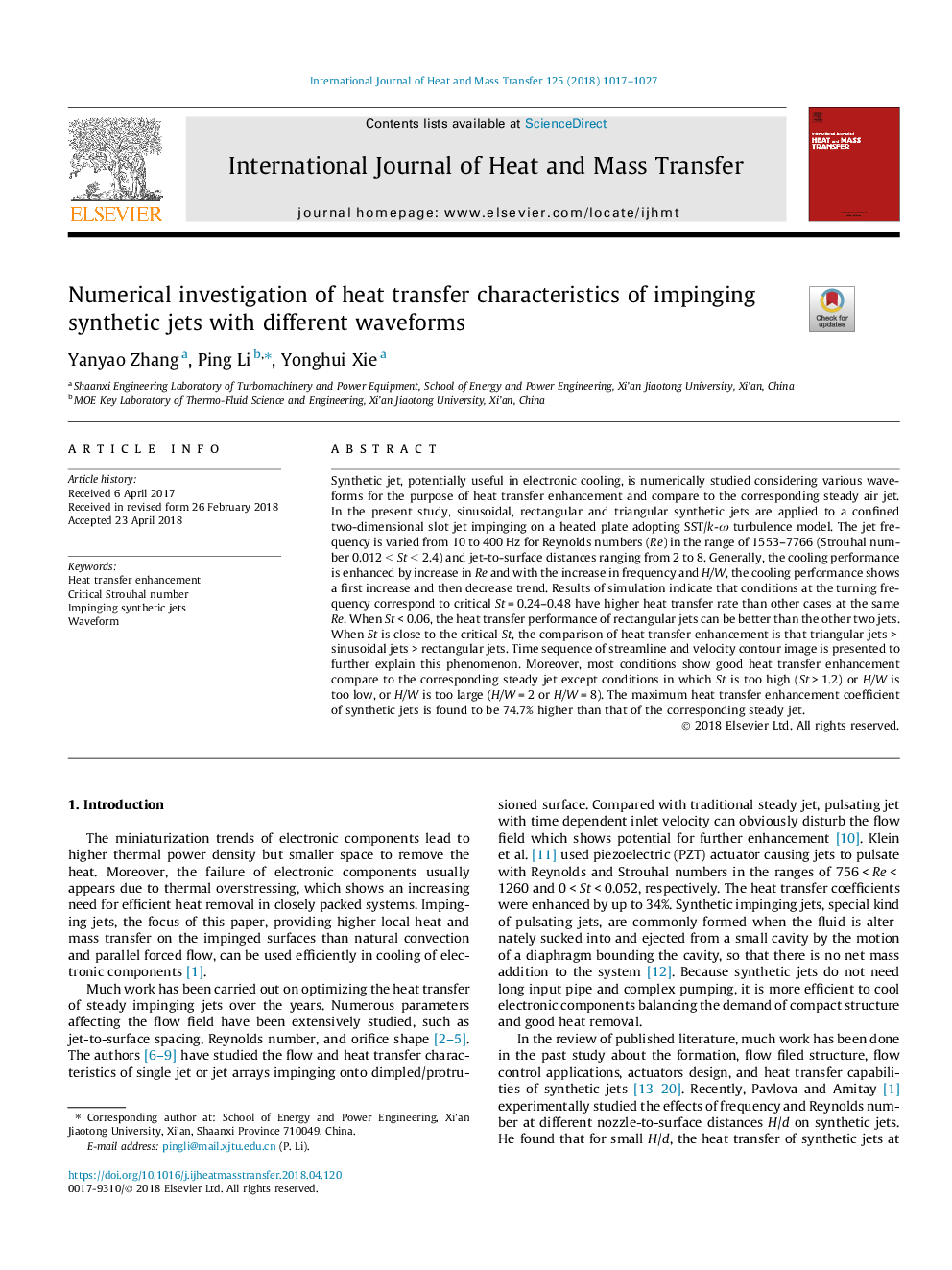| Article ID | Journal | Published Year | Pages | File Type |
|---|---|---|---|---|
| 7054147 | International Journal of Heat and Mass Transfer | 2018 | 11 Pages |
Abstract
Synthetic jet, potentially useful in electronic cooling, is numerically studied considering various waveforms for the purpose of heat transfer enhancement and compare to the corresponding steady air jet. In the present study, sinusoidal, rectangular and triangular synthetic jets are applied to a confined two-dimensional slot jet impinging on a heated plate adopting SST/k-Ï turbulence model. The jet frequency is varied from 10 to 400â¯Hz for Reynolds numbers (Re) in the range of 1553-7766 (Strouhal number 0.012â¯â¤ St â¤â¯2.4) and jet-to-surface distances ranging from 2 to 8. Generally, the cooling performance is enhanced by increase in Re and with the increase in frequency and H/W, the cooling performance shows a first increase and then decrease trend. Results of simulation indicate that conditions at the turning frequency correspond to critical Stâ¯=â¯0.24-0.48 have higher heat transfer rate than other cases at the same Re. When Stâ¯<â¯0.06, the heat transfer performance of rectangular jets can be better than the other two jets. When St is close to the critical St, the comparison of heat transfer enhancement is that triangular jetsâ¯>â¯sinusoidal jetsâ¯>â¯rectangular jets. Time sequence of streamline and velocity contour image is presented to further explain this phenomenon. Moreover, most conditions show good heat transfer enhancement compare to the corresponding steady jet except conditions in which St is too high (Stâ¯>â¯1.2) or H/W is too low, or H/W is too large (H/Wâ¯=â¯2 or H/Wâ¯=â¯8). The maximum heat transfer enhancement coefficient of synthetic jets is found to be 74.7% higher than that of the corresponding steady jet.
Keywords
Related Topics
Physical Sciences and Engineering
Chemical Engineering
Fluid Flow and Transfer Processes
Authors
Yanyao Zhang, Ping Li, Yonghui Xie,
